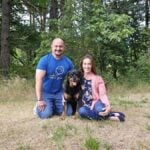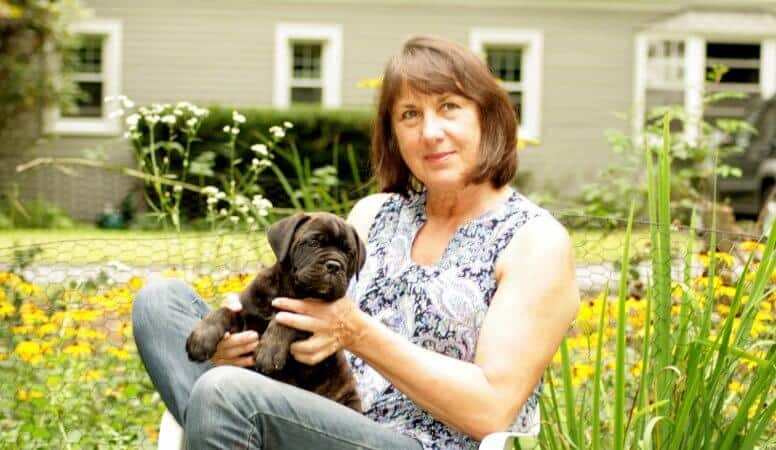


Home » Helene Nietsch | Banstock Bullmastiffs

Helene Nietsch
1. I have lived in Newtown, Connecticut, for 38 years and lived most of my life in Connecticut, briefly in New York and Pennsylvania. I am recently retired after working for General Electric for 35 years. I have been breeding for 50 years and my kennel name is Banstock, which I developed after co-breeding with Louise Sanders (retired), Bandog Bullmastiffs, for 16 years. With limited showing and breeding, I am proud to have co-bred both the top-winning and the top-producing Bullmastiff sire of all time.
2. Since I have been breeding perhaps a litter a year, I am intimately familiar with my Banstock type and the overall construction of my puppies, which I am evaluating from day one. However, it seems that I make my selection for my keeper or my show prospects when they are on the ground and ready to go out the door.
3. I have seen my breed in better shape than now, but I believe overall soundness, movement, and head type has improved. I think the dogs especially are getting too big and heavy, some weighing, I believe, more than 20 pounds over the weight parameters.
4. I am currently Co-Chair of Breeder Education and past Chair of Judges Education, and both committees work together in the hopes to have breeders and judges recognize and show and reward correct breed type. The head is indeed the hallmark of the breed, but the squareness (nearly) of the body every bit depicts breed type as the squareness of the head and muzzle. We have a very good Illustrated Standard and JE/BE PowerPoint presentations, and I’d like to see judges recognizing correct breed type in the Group and BIS ring and breeders adhering to our Breed Standard. I think there are far too many shows and you can finish a mediocre Bullmastiff if you just simply persevere.
We have a very good Illustrated Standard and JE/BE PowerPoint presentations, and I’d like to see judges recognizing correct breed type in the Group and BIS ring and breeders adhering to our Breed Standard.
5. I think social media is the determent of the sport, where handlers and breeders can freely mislead and advertise their dogs to judges that accept their FB friend requests. Why advertise when all you need is Facebook to see those who promote their wins or litters to the readers?
6. I think your average person is being out-priced to breed, show, or even owner-handle their dogs. There could be many really good dogs out there that can’t afford a handler or a campaign. And breeding a litter can cost up to $10,000 when you finish your champion, do health testing, use and ship frozen semen, do progesterone testing, surgical implants and transcervical, or caesarean sections. Not to mention if a litter or pup has medical issues.
7. I think that the resources available in both animal husbandry and breeder/judges’ education are amazing. Breed clubs have comprehensive presentations and Illustrated Standards, and AKC Canine College is the best source for learning about a breed, next to valuable mentors. (JE/BE is currently working on developing our Canine College course.) There are judges’ groups, Juniors and handling seminars, health clinics, and so many opportunities available regularly to educate at many of the show clusters all over the country.